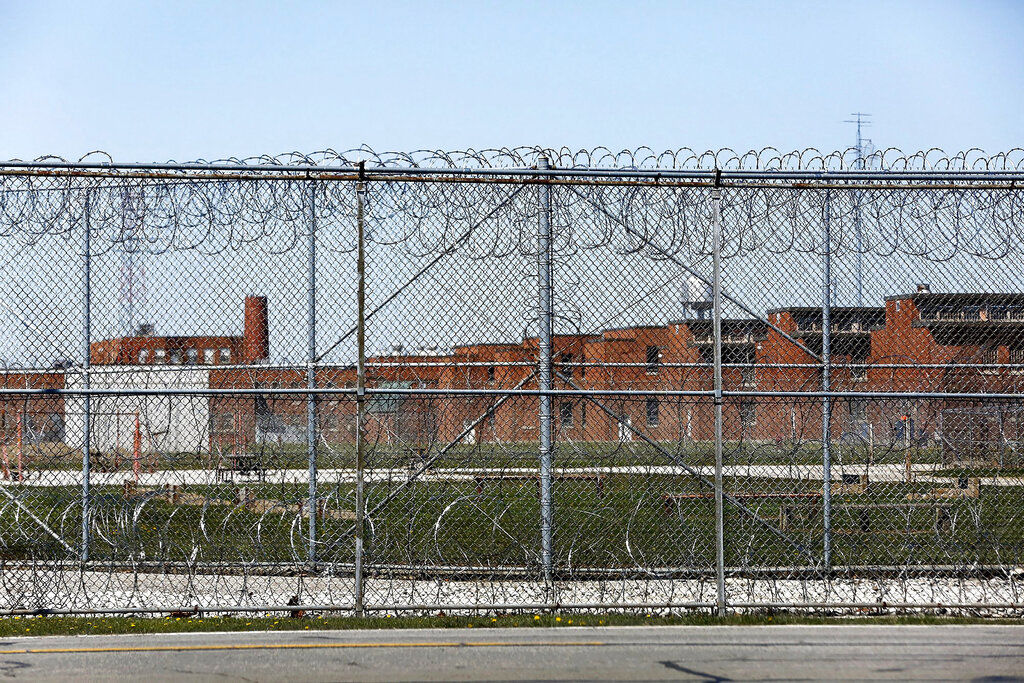
COLUMBUS, Ohio (AP) — The number of prison inmates testing positive for the coronavirus soared well past
the 50,000 mark last month, as recent outbreaks threatened to undo control measures put in place earlier
in the pandemic.
At the end of June, the total number of coronavirus cases among prisoners had reached at least 52,649, an
increase of 8% from the week before, according to data compiled by the Marshall Project, a nonprofit
news organization focusing on criminal justice, and The Associated Press.
Of those, at least 35,796 have recovered, and at least 616 inmates have died, the data showed.
Among staff, more than 11,180 cases of coronavirus have been reported, including 43 deaths.
As of June 30, only Wyoming and Hawaii still had not identified any confirmed cases of coronavirus among
prisoners.
New cases in prisons began to drop last month, with less of the rapid growth seen in the spring when
Michigan, Ohio, Tennessee, Texas and other states began mass testing of prisoners, the data shows.
But by the end of June, new outbreaks in Arkansas, California and Texas began to push the numbers up
again.
The rising cases in prisons is mirroring a large increase in cases across the U.S., where there have been
some 50,000 total per day over the past few days and hot spots are exploding in multiple states,
including Arizona, Florida and Texas.
Prisons have been of specific concern because of social distancing worries, and the fear that outbreaks
inside crowded facilities can affect surrounding communities as employees and vendors come and go.
The federal Bureau of Prisons recorded the most inmate deaths at 94. Ohio led states with the most
deaths, with 86 reported through the end of June. More than 5,000 federal inmates have tested positive.
Coronavirus outbreaks in prison are an indictment of mass incarceration in the U.S., with many systems
warehousing people in situations that make social distancing impossible, said Nicole Porter, director of
advocacy for The Sentencing Project.
Porter said the response by governors has been inadequate, with only minimal releases of inmates in most
states in an effort to free up space. At the very least, authorities should be moving to release all
inmates scheduled to get out this year, she said.
In Louisiana, for example, a state panel tasked with examining up to 1,100 inmates for release ultimately
approved just 100, of which 63 will be released, The Advocate reported.
"A global pandemic creates a level of urgency that people should not be kept in prison one day
longer than necessary," Porter said. "Many of those people pose absolutely no threat to public
safety and their liberty would have been restored anyway this year."
California saw a setback this week in its efforts to control the virus, when a third of the 3,500 inmates
at San Quentin State Prison near San Francisco tested positive after officials transferred 121 inmates
from the heavily affected California Institution for Men in Chino on May 30 without properly testing
them for infections.
Gov. Gavin Newsom has defended his administration’s handling of the pandemic in prisons, noting that he
has ordered about 3,500 early releases, plans about 3,500 more, and halted transfers from local jails to
create more space in prisons for social isolation.
Six states — Arkansas, Connecticut, Michigan, New Jersey, Ohio and Tennessee — now have infection rates
higher than one of every 10 inmates, according to the Marshall Project data.
In Ohio, cases have now been reported in nearly all prisons, but two account for the majority of cases:
Pickaway Correctional Institution in central Ohio, which includes a medical wing, and Marion
Correctional Institution in north-central Ohio, where virtually all inmates tested positive.
Thirty-six inmates died at Pickaway and 13 at Marion, according to the Ohio Department of Rehabilitation
and Correction.
Prison advocates in Ohio are using the pandemic to promote legislation working its way through the
Statehouse that would reduce the number of people sent to prison for drug crimes.
"They could save lives by reducing the prison population as the COVID-19 death toll continues to
rise behind bars," said Piet van Lier, a researcher for Policy Matters Ohio.
The state says it reduced Ohio’s prison population by 3,170 inmates — a 6.5% drop — since March through
several measures, including releasing inmates early, the normal expiration of sentences, and temporarily
suspending intakes of male prisoners from county jails, though that policy has since ended.
The population of around 47,000 is now the lowest since 2006. The Ohio prison system’s goal in responding
to the pandemic "was to reduce the prison population in a manner which maintained public
safety," spokeswoman JoEllen Smith said Friday.
___
Associated Press data journalist Meghan Hoyer in Washington, D.C., contributed to this report.

